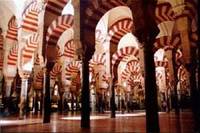
About the Catholica
Previous Posts
Toscana and the Refuges of LightThe Anti-Narnia
Ballad of the White Horse
Red and Black (at the OCP Cafe)
Dvorâk
Polyphonic Bliss
Best. Motet. Ever.
Syndication

News
Seattle CatholicCatholic Exchange
Crunchy Catholicism
Being CatholicCaelum Et Terra
Mystical Rose Herbals
Mary Gardens
Tridentine Tiramisú

St-Martin de Bréthencourt
Chartres Pilgrimage
(muchas fotos!)
Campos Photos
LMSEW Photos
Catholic Artists Today

Official Passion Site
Smallpax Guild
Nicholas Wilton Music
StudiObrien
Via Rosa Rosaries
Regina Doman
Poetry of Pavel Chichikov
Free Literature On the Web

Project Gutenberg
G.K. Chesterton
On Nothing
On Something
First and Last
Europe and the Faith
Belloc - Poetry
More Belloc Poetry
John Henry Newman
Christopher Dawson
Frederico GarcÃa Lorca
Tolkien

Romantic &
Imaginative Theology
Council of Elrond
Anke Eissmann's Art
Angels and Elves
Christianity and Middle Earth
Coulombe Essays
Ardalambion
Gwaith i Pheddain
Arthrand Board
Crazy-Go-Nuts
Homestar RunnerStrindberg & Helium
SuperPope Anime
The Onion Dome
Blogs I Like

Alle Psalite
Andrew Cusack
Angry Twins
Cacciaguida
Church of the Masses
Curt Jester
Dappled Things
Devout Life
Dignare Me Laudare Te
Erik's Rants & Recipes
Flos Carmeli
Give Tongue
Hallowed Ground
The Idyllist
Inn at the End of the World
Jade's Trick
Jelly-Pinched Theatre
Old Oligarch
Open Book
Orthonormal Basis
Sancta Sanctis
Secret Agent Man
Shrine of the Holy Whapping
Video Meliora
Vivid
The Western Confucian
Zadok the Roman
Christendom Blogs
Charlemagne's PalaceThe Christendom Commons
Meet Virginia
Destination: Order
Enchiridion
Fiddleback Fever
JulesArts
Midnight Radio
Nota Bene
¿Qué?
somewhatlost
This Red Rock
West of the Moon
Vestal Morons
Zucchero
<< # St. Blog's Parish ? >>

Archives
- April 2004
- May 2004
- June 2004
- July 2004
- August 2004
- September 2004
- October 2004
- November 2004
- December 2004
- January 2005
- February 2005
- March 2005
- April 2005
- May 2005
- June 2005
- July 2005
- August 2005
- September 2005
- October 2005
- November 2005
- December 2005
- January 2006
- February 2006
- March 2006
- April 2006
- May 2006
- June 2006
- August 2006
- September 2006
- January 2007
- February 2007
- July 2007
Kiss me, I'm Catholic.
Friday, April 23, 2004
Fun Translating Garcia Lorca

Cathedral at Córdoba
Several bloggers have commented on the minor flap over Muslims asking to pray in Córdoba's cathedral. It seems that the request was only a rumor (sigh of relief), but the mention of Córdoba set off echoes in my mind, as it always does. The begining of Warren Carroll's gripping account of Pelayo's resistance and the dawn of the 770-year Reconquista was at the back of my head as I was reading:
"In Spain there was a man named Pelayo. His name was the proto-Spanish version of the Latin name Pelagius, "man of the sea-shore." He came from the north, from the Asturias, the mountains overlooking the coast at Gijón. He was distantly related to some of the Visigothic kings.... Governor Munuza of the Asturias, in Gijón, sent Pelayo as a hostage with a Muslim party going to Córdoba, the new Muslim seat of government, in 717. As soon as Pelayo had left, Munuza seized his sister, whose beauty had evidently caught his eye, and put her into his harem.
South across much of the length of Spain rode Pelayo. As a hostage, his life was forfeit to his Muslim companions. Everywhere he saw the signs of their new dominion, their government, administration, and garrisons. The land where his Visigothic forebears had dwelt for 250 years must have seemed suddenly, utterly alien. It was Muslim land now; to human eyes the whole world would soon be theirs. It was probably summer, so that as the party cantered southward toward Córdoba, it grew steadily hotter under the ardent Spanish sun. More and more they would have traveled in the cool night and slept in the afternoon blaze. We can best visualize that silent, dusky journey on once friendly roads gone strange and sinister with the enemy's brooding presence - a journey ultimately to prove epochal for Catholic Spain, and through her for the whole world - in the haunting images of Garcia Lorca's Canción de jinete (Song of the Horseman)"
("The Building of Christendom," pg. 272)
I remember that poem well, because it was the first Spanish poem I ever translated. Since then, I've come across inumerable English versions of it, all savouring of different poetic philosophies. Here is the text of the poem:
Córdoba.
Lejana y sola.
Jaca negra, luna grande,
y aceitunas en mi alforja.
Aunque sepa los caminos
yo nunca llegaré a Córdoba.
Por el llano, por el viento,
jaca negra, luna roja.
La muerte me está mirando
desde las torres de Córdoba.
¡Ay qué camino tan largo!
¡Ay mi jaca valerosa!
¡Ay que la muerte me espera,
antes de llegar a Córdoba!
Córdoba.
Lejana y sola.
Steven Spender's translation is the one that appears in my little book of Lorca's poems. I'm afraid I don't know much about Spender, but he wrote a poem which involves his son's canary and... the Illiad. It sticks with me for some reason. Anyway, his version is so literal that it sounds as though he ran the poem through Google Translator. For ¡Ay que la muerte me espera, he puts "Ay! That death should wait me." What's with that? True, esperar literally means "to wait" or "to hope," but the construction makes no sense in English. We have a nice word that conveys Lorca's meaning more exactly: awaits. This is my English (better Spanish speakers out there are welcome to correct any mistakes):
Córdoba.
Distant and alone.
Black pony, big moon,
and olives in my saddlebag.
Though I know the roads
I will never come to Córdoba.
Through the plain, through the wind
black pony, red moon.
Death is watching me
from the towers of Córdoba.
Oh, the long road!
Oh, my brave pony!
Alas that death awaits me,
before Córdoba!
Córdoba.
Distant and alone.
Haunting indeed.

